How Much Does It Cost To Install A Fence?
$3,440 National Average
$8 - $46 Per Linear Foot
$1,330 to $5,550 Per Fence Type
The cost of fence installation can vary significantly depending on a lot of factors. Some of it are the cost of the materials, property size, labor costs etc. You also need to consider that the prices of these factors can vary depending on your location.
Installing a fence can enhance the overall aesthetic and curb appeal of your home. It is an excellent way to get some privacy and solitude even if you live in a neighborhood with other houses, or would need to be sure your kids or pets are kept in a safe place.
Naturally, if you are planning to add a fence around your house, the first thing you would like to know about is the cost of fence installation. This guide will help you so you can make an educated decision.
$3,440
per 140 linear feet

The average cost of installing a backyard fence, of about 140 linear feet (common for standard lots), for your home, is about $3,440. The usual price range for all types of fences is $1,330 to $5,550, which equates to $8 to $46 per linear foot.
However, you cannot determine the exact cost of fence installation as it depends on various factors. You have tons of different options of fences for your yard, each with a particular purpose, appearance, and pricing range. So, in this guide, I will discuss various types of fence installation costs, along with some other information that you might find helpful.
Average Cost of Fence Installation for Backyard
Depending on the materials and the design you prefer, the cost of fence installation can range from $1 to $45 per linear foot. So, the overall average cost of fence installation for your backyard is approximately $1,500 to $5,500.
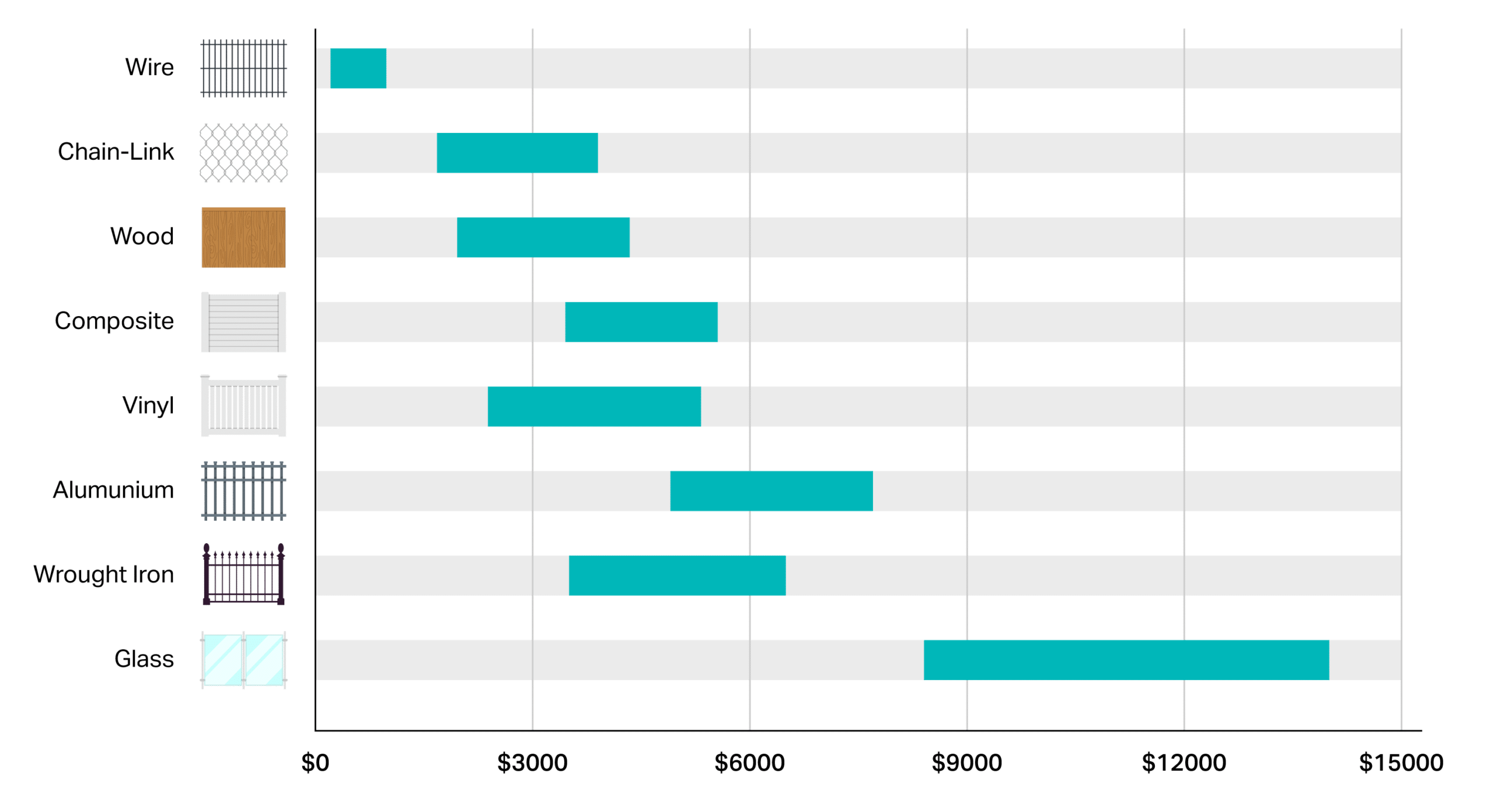
Let’s discuss different types of fences and their installation costs:
Wire
A wire fence is one of the most cost-effective types of fencing available today. Installation prices for wire fencing range from $1 to $7 per linear foot based on the type. Barbed wire, woven wire, mesh wire, and hog wire are some of the common wire fences.
Wire fencing is ideal for keeping people out of your yard or gardening area and keeping in large animals.

It is not only inexpensive and quick to install, but it is also low maintenance. Though wire fences are affordable, durable, and easy to install and customize, they can be highly risky for children, and generally are not permissible in a land that is zoned for residential use.
Life Expectancy
10-30 years. However, with appropriate maintenance and rapid repair, they can survive even longer.
Durability
Wire fences are extremely thick and durable. Cutting through the wires is difficult, and gnawing through it is even more difficult.
Characteristics
The construction of a wire fence is basic. Installation is not limited by terrain undulations, which makes it ideal for mountains, hills, and multi-curved locations. The cost is reasonable and appropriate for large-scale projects.
Best cleaning solution
Soap water. You have to mix liquid soap with water to clean the fence. Or, you can also use detergent to prepare the mixture.
Chain Link
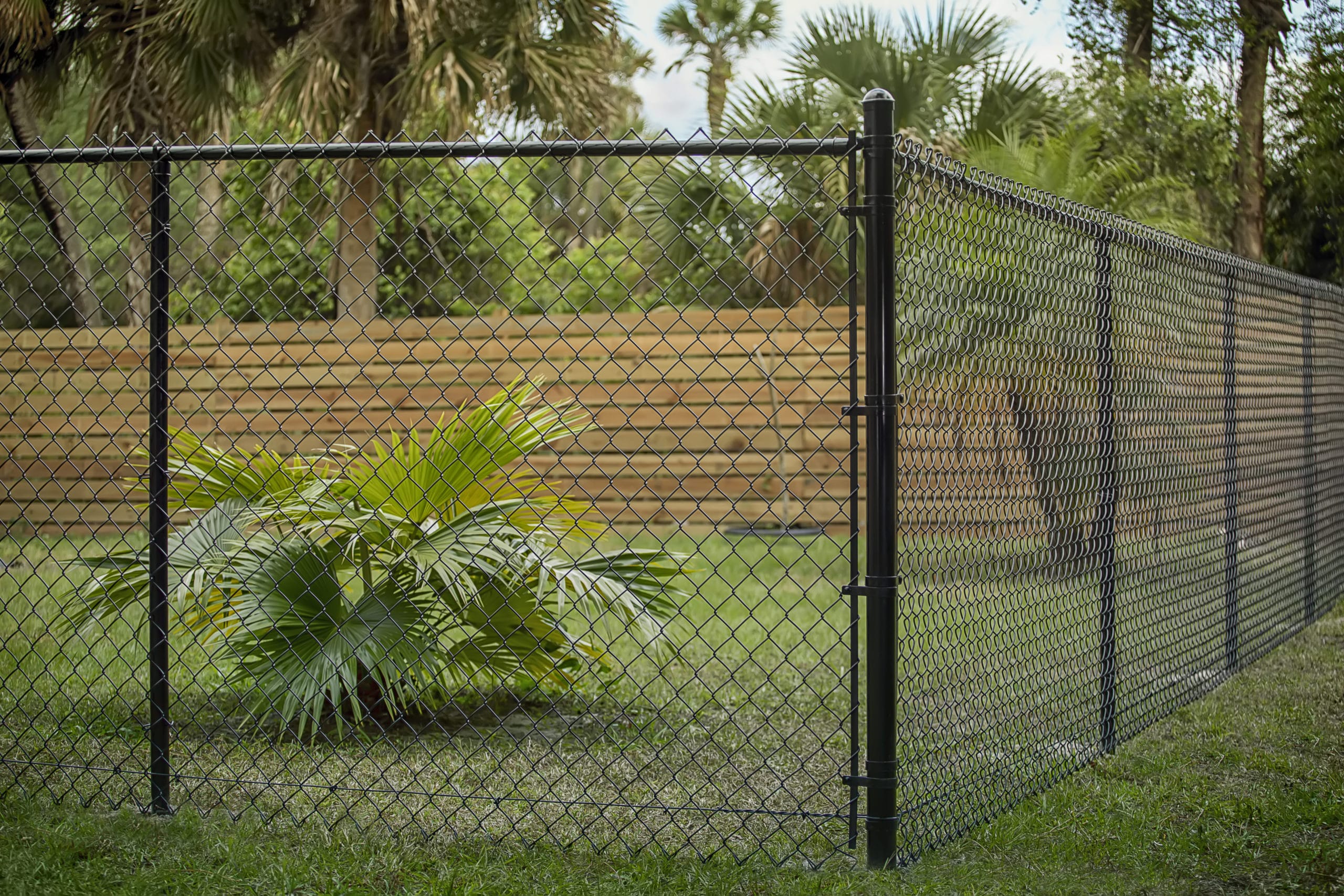
Chain Link fence, also known as hurricane fence, is an affordable, low-maintenance, and long-lasting fence option. It is a versatile fence type that commercial properties commonly utilize, but you can also see it in domestic properties.
Installing chain-link fencing costs about $12 to $35 per linear foot, with the average homeowner spending $1,350 to $3,900. However, the cost of your fence is determined by its height, which might be 4, 6, or 8 feet.
If you are looking for something more secure than a wire fence at an affordable rate, chain link fencing can be a good option for you. This is a fantastic option for designating property lines for a large area, and keeping in your pets but it is not very gorgeous as a border. That said it is approved in most residential
Life Expectancy
15-20 Years. If the fence is made of high-quality metal and has a rust-resistant powder coating, it won’t be severely affected by the climate.
Durability
Chain link fences of high quality are sturdy, resilient, and long-lasting. UV rays, rain, snow, severe storms, or stray baseballs will not damage your fence and prevent it from doing its job.
Characteristics
Chain link fencing is ideal for separating tiny yards that back up one another. These fences have an open mesh, so they don't obstruct sunlight from reaching gardens and other areas that need it.
Best cleaning solution
White Vinegar is the perfect option for cleaning your chain link fence. But you can also use soap water or a mixture of borax powder and water to do the job.
Wood
Building a wood fence will provide your home extra seclusion while also improving its curb appeal. A wood fence is a practical and popular alternative for upgrading an existing fence or starting from fresh with new construction.
Building a wood fence will provide your home extra seclusion while also improving its curb appeal. A wood fence is a practical and popular alternative for upgrading an existing fence or starting from fresh with new construction.
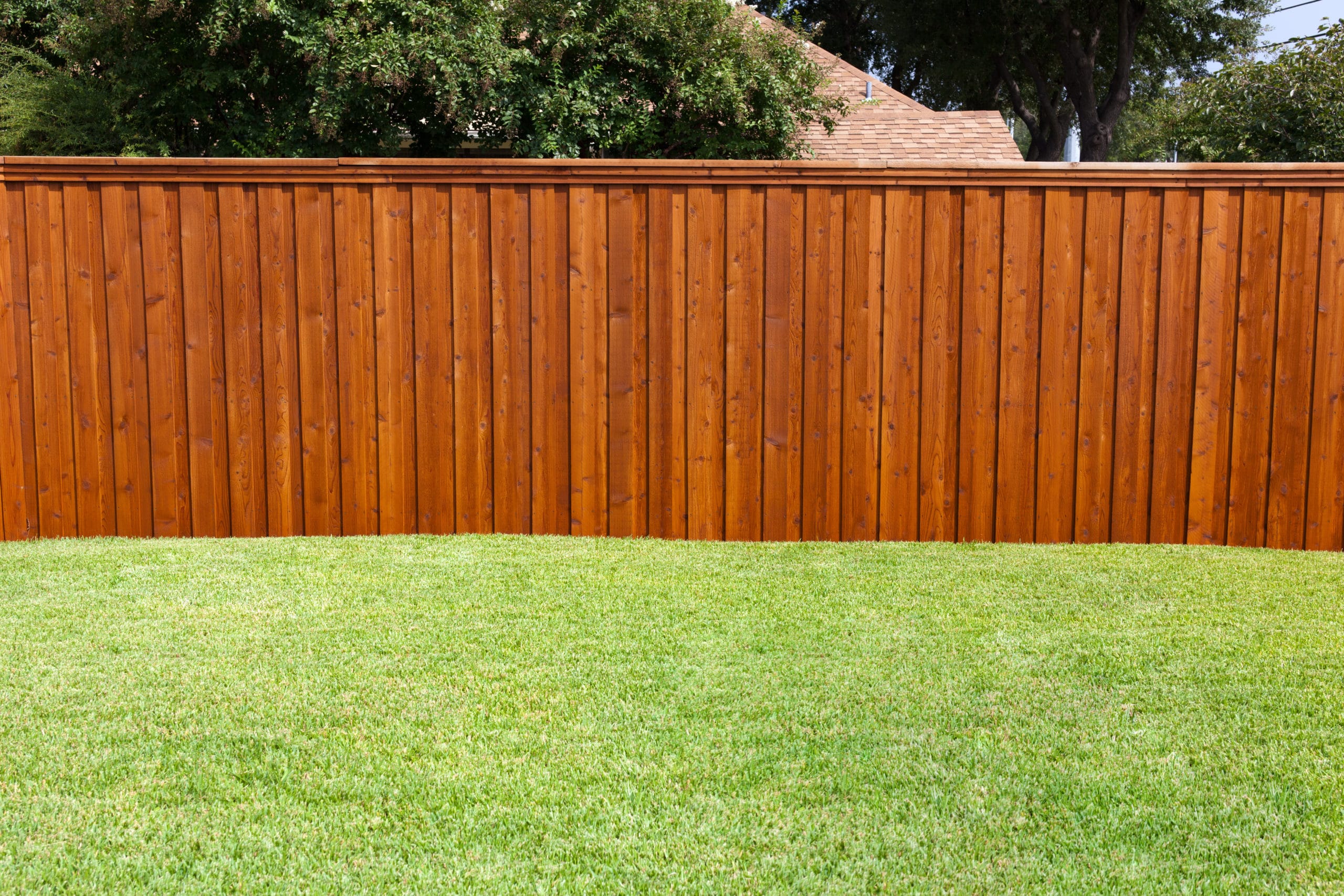
Building a wood fence will provide your home extra seclusion while also improving its curb appeal. A wood fence is a practical and popular alternative for upgrading an existing fence or starting from fresh with new construction.
Wooden fences provide excellent appearance and function at a reasonable price. To put it another way, this sort of fence offers a lot of bang for your buck. The average cost for installing a wooden fence is about $14 to $31. However, wood fencing costs vary depending on the type of wood used. Redwood, pine, oak, and cedar are the most popular types of wood for fencing.
Well, wood fences are very attractive looking and durable. But they require frequent maintenance, staining, and painting due to weathering.
Life Expectancy
10-20+ years. The range varies widely depending on the local conditions. Extreme sun or rainfall radically shortens the life of wood fencing.
Durability
Wood fences are durable, but only if you take care of them properly. Your wood fences will last for a long time if you use high-quality wood and work with a professional fence installation provider. However, wood fences won’t last long in extreme weather areas.
Characteristics
Wood fences, with their rich grain and texture, are perhaps the most attractive of all types of fences. It also works hard to keep plant pests at bay. It is long-lasting and is not much resistant to decay, and dampness.
Best cleaning solution
1:2 ratio of chlorine bleach and water. Spray the mixture on the wood with a garden hose. You can also use a brush if you don’t have a sprayer.
Composite
Composite fencing is a hybrid of wood and plastic that resembles wood but has fewer downsides. These are low-maintenance, insect-resistant, and rot-resistant when compared to other materials. Composite fencing is extremely durable. Apart from wrought iron, it is the most durable fencing material available.
However, this type of fence is pretty expensive. Composite fencing costs about $26 to $57 per linear foot to install, with the average homeowner spending $3,450 to $5,550 to fence their yard. Although it requires a considerable upfront cost, it won’t require high maintenance and upkeep like most other fence types.
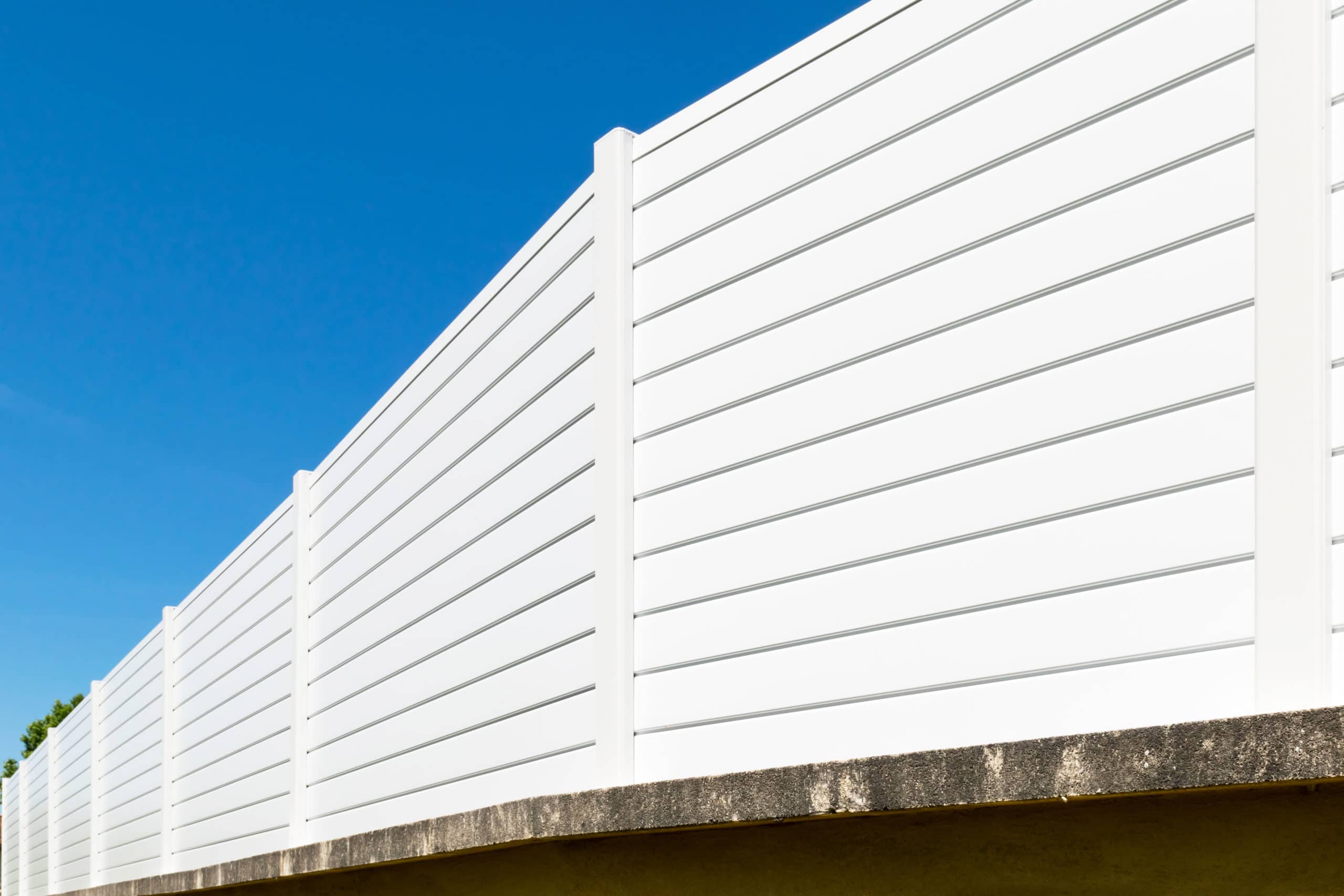
Composite fencing is available in a variety of colors and styles, allowing you to customize your fence to your exact specifications. It is very elegant to look at and adds significant value to your property. As a long-term investment, composite fencing is one of the most preferable options for many people.
Wood fences may be a natural wood (strongest) or a composite ‘wood’ which is generally made of sawdust and plastic. Be sure to clarify what you are getting with your contractor (composite or true wood). Composite wood should be cheaper.
Life Expectancy
Up to 50 Years. But you can expect your composite fence to last far longer than 50 years only with a little maintenance. If you want to invest in something long-term, this is the best option for you.
Durability
Wire fences are extremely thick and durable. Cutting through the wires is difficult, and gnawing through it is even more difficult.
Characteristics
Composite fencing is more durable than wood fencing and. Composite fencing's strength is the key to its long life. It is weather-resistant and can stand tall through extreme weather. Besides, termites, a wood-eating insect, will not harm composite fencing.
Best cleaning solution
You can use dish soap or detergent soap for cleaning composite fences. You can remove all the dust and dirt from the fence with hot soapy water and a gentle brush.
Vinyl
The terms ‘vinyl’ & ‘PVC’ are used interchangeably in the fence industry. Technically speaking, PVC is a type of vinyl.
Unlike wood fences, vinyl fences don't decay, fade, or succumb to weather effects. It is inexpensive, lightweight, resilient, and simple to assemble. Generally, vinyl fences cost $17 to $38 per linear foot.
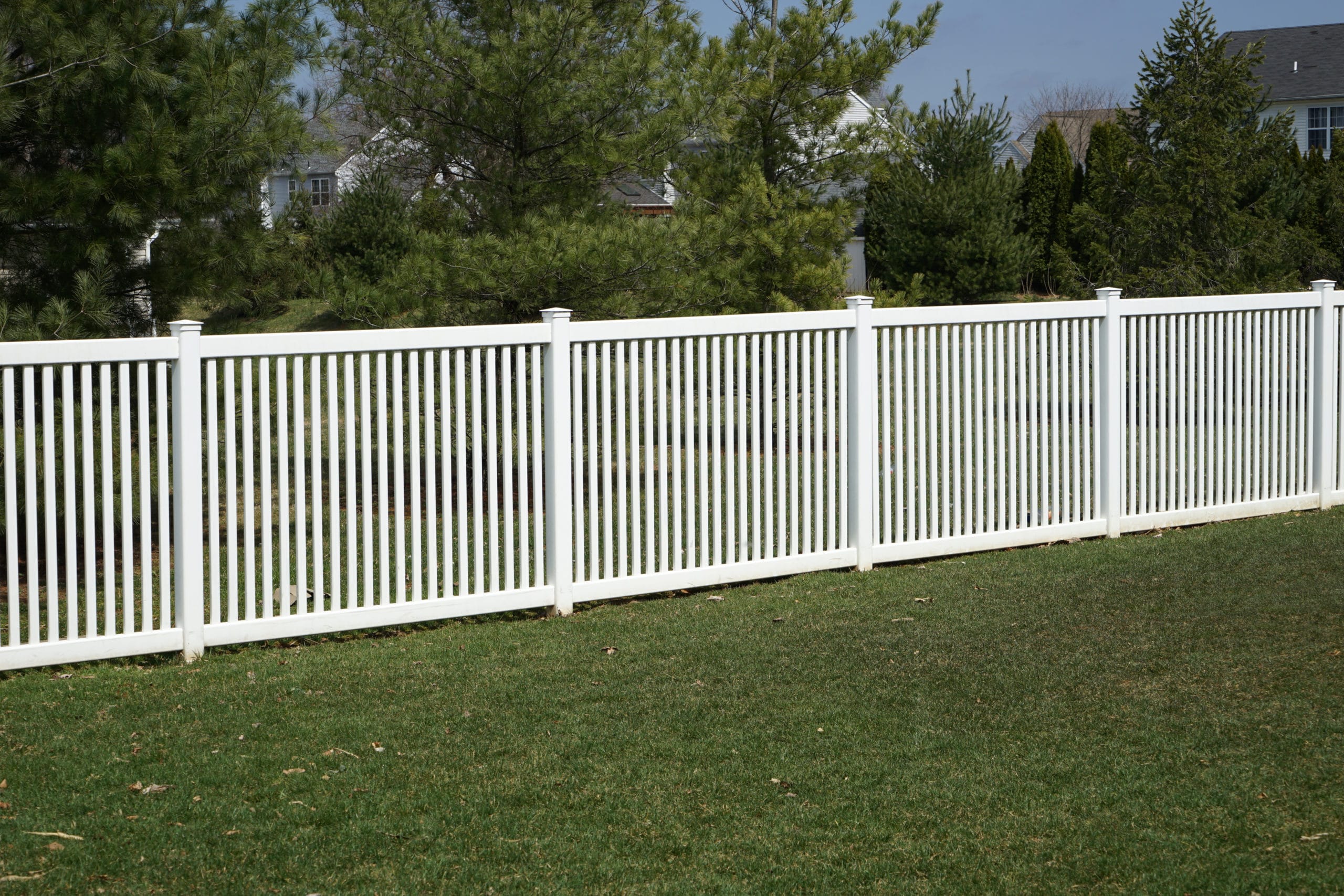
A vinyl fence is a good long-term investment because it is low-maintenance and lasts considerably longer than wood. Vinyl fences don't shrink, rot, or crack like wood fences, and they don't have the oxidation and corrosion issues that metal and some chain link fences do.
However, it is not highly secured since it cannot withstand attempts to cut through it. Moreover, some people consider vinyl fences to be unattractive.
Life Expectancy
20 Years. The fence will withstand even severe storms and snowfall and won’t rot, crack, shred, discolor, or break. So, expect your fence to last longer than 20 years if you are ready to do a little maintenance.
Durability
Vinyl fencing has approximately five times the tensile strength of wood and is about four times more flexible than wood. That’s impressive numbers with strong sales points.
Characteristics
Vinyl fences, made of polyvinyl chloride, are low-maintenance and do not decay, attract insects, or require refinishing. It comes in a variety of colors and styles, ranging from small picket fences to high privacy fences. However, the initial setup expenses can be costly, and harsh weather might cause the material to get damaged.
Best cleaning solution
White Vinegar is the best cleaning solution for vinyl fences. It is a great environment-friendly solution to clean your vinyl fence, which can even kill hundreds of organisms and viruses.
Aluminum
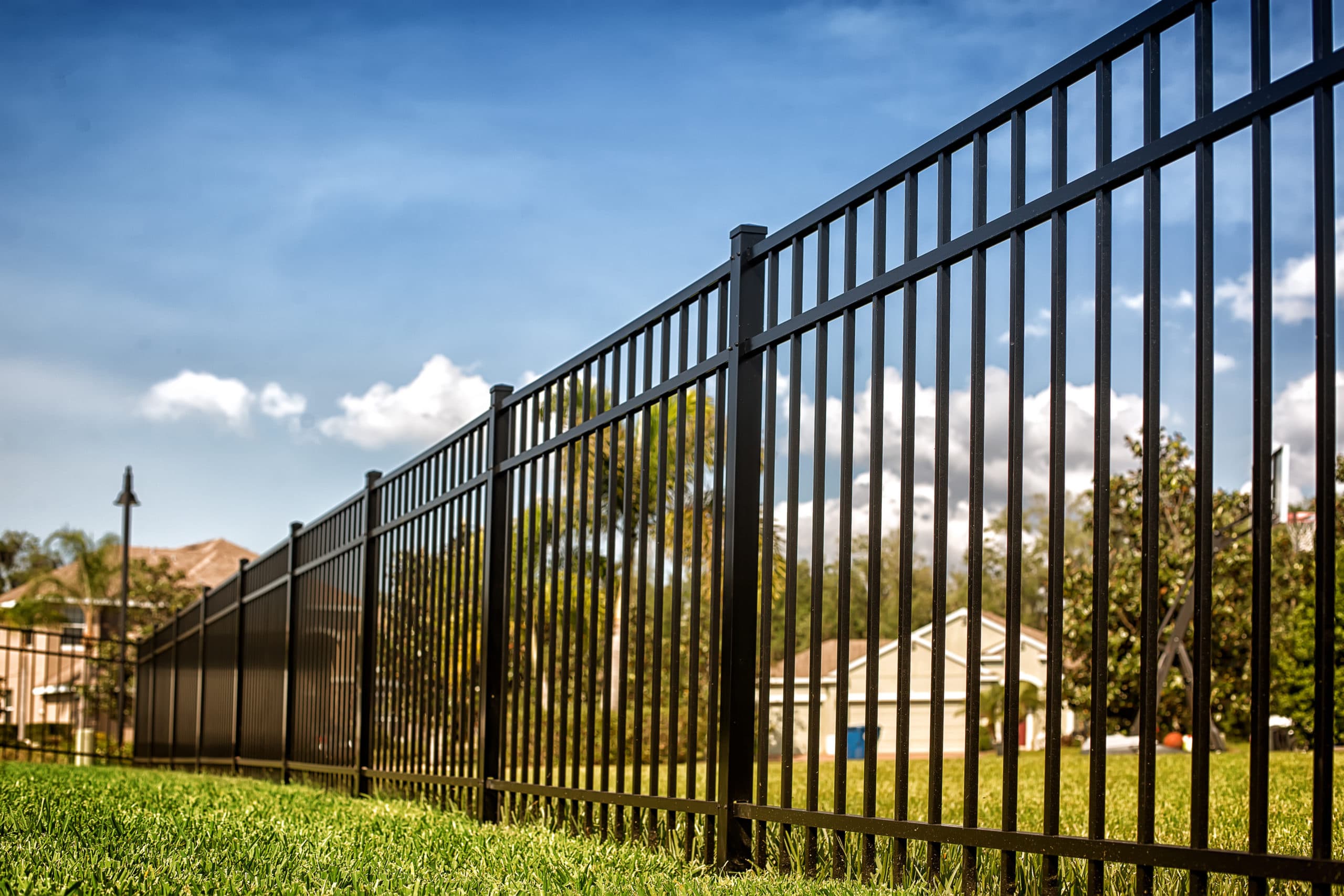
Aluminum is a rust-resistant, lightweight metal that is perfect for humid, moist, or ocean-side environments. It is simple to set up and doesn’t require any upkeep. Moreover, aluminum fencing is available in several colors, designs, and privacy types. It comes in a variety of hues to fit your existing landscaping and aesthetic appeal.
Being one of the cheapest options for metal fencing, it is the top choice for many homeowners. On average, installing a four feet tall aluminum fence costs $27 to $32 per foot, while a six feet fence costs $35 to $55 per foot.
Though most of the aluminum fences are rust resisting, some cheap brands can rust. Besides, they are not the best choice when it comes to security. However, comparing all the benefits to its price, they are no doubt worth it.
Life Expectancy
20 Years. However, the grade of the metal and the coating technique used to make the fences are factors to consider while determining the lifespan.
Durability
Aluminum fencing outlasts typical fencing materials such as chain links and wood. Aluminum is resistant to corrosion and rust and also doesn’t fade and stain with time.
Characteristics
Aluminum fences are flexible, light, and one of the most versatile metal fences available in the market. They don’t require much maintenance and are eco-friendly.
Best cleaning solution
You can easily clean your aluminum fence with soap water. Spray mild soapy water on your fence now and then to keep it looking new by removing grass cuttings, dust, and pesticides.
Wrought Iron
A wrought-iron fence is a top-notch option for a dignified, traditional appeal. This sort of fence is long-lasting, attractive, and adaptable. Because this fence design is more specialized, it is preferable to leave the construction to a professional. Besides, it will almost certainly be a great fit for any backyard because you can highly personalize it for each job.

The typical cost of installing a wrought iron fence is $24 to $56 per foot. Estimated costs range around $3,500 to $6,500 for an average yard of 150 linear feet. However, the installation costs might be higher in complex setups, such as several corners or gates. Though the price is a bit higher than aluminum fencing, it is a better option as a wrought iron fence will last for a lifetime.
Well, wrought iron fences are generally not much prone to rusts. But it would be best if you apply the rust-inhibiting spray to the fences regularly as it can develop rust depending on the weather and climate of your area. Overall, it is an excellent security fence for individuals seeking a high level of protection because it is extremely difficult to break.
Life Expectancy
20 Years. Many wrought iron fences can last even for 100 years if they are made of galvanized steel. Generally, fences made of cast iron won’t last that long.
Durability
Wrought iron's low carbon feature boosts its endurance far beyond that of ordinary iron, allowing wrought iron fences to last an incredibly long time. It is the most durable of all the fence types.
Characteristics
Wrought iron fences are durable, flexible, and one of the most secure fences. They are more difficult to break into and hence more secure than most other alternatives. Besides, as they are flexible you can customize them to various shapes and designs.
Best cleaning solution
Use soap water to clean your wrought iron fence. It will clean the wrought iron of any existing dust or chemicals. You can use a toothbrush or cleaning brush for scrubbing the small areas.
Glass
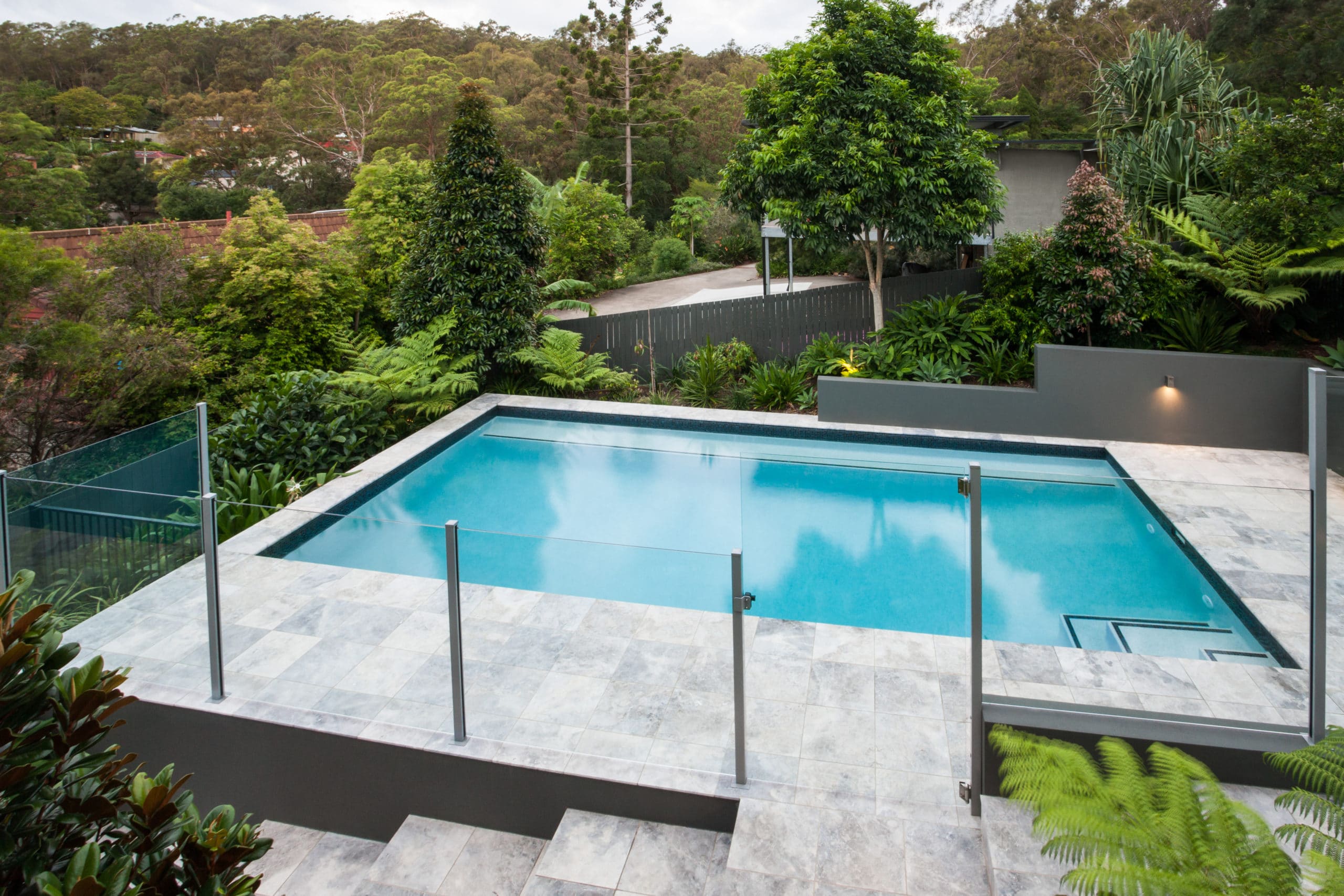
If you are looking for something unique and aesthetic and won’t mind investing a high amount of money, glass fencing is the best option for you. Glass fences provide a trendy, stylish appearance that preserves your view while also making your yard look bigger. Moreover, tempered glass is extremely durable and break-resistant.
The average price range for glass fencing is about $60 to $100 per linear foot. The price can get higher depending on the design and glass type. Besides, frameless glass fencing costs more than framed glass fences. So, not to mention, resetting a new panel would be costly too if one panel cracked.
Well, apart from the expensive price, there are some other drawbacks of glass fencing such as scratch marks, and repair costs. But instead of blocking a gorgeous view like a wooden fence, glass fencing allows you to enjoy the scenic beauty. As a cherry on top, a higher property value is frequently associated with an excellent view.
Life Expectancy
20 Years. Though glass fences don’t have a long lifespan like composite, or wrought iron fences. They can last a long time if you can take care of them properly. The life expectancy can get higher or lower depending on the weather condition of your area too.
Durability
Glass fences offer extreme durability even in regions with harsh weather. They can last a lifetime if you take proper care of them.
Characteristics
Glass fencing is typically 12millimeters wide glass panels with a maximum length of 1.8 meters. It gives various spaces such as your balcony, swimming pool, and deck an elegant and lovely appeal. Though glass fences are one of the most expensive types of fences, they require very low maintenance.
Best cleaning solution
For cleaning glass fences, you have to wipe the glass panels with soap water, or glass cleaner and a sponge. But be careful to keep the sponge clear of any sand or anything that could scratch the glass.
Getting the Right Type of Fence
The Best Fencing Material
In my opinion, composite fences are the best overall fence. They will give you the elegance of wood fences, while also providing a long lifespan. They are also low-maintenance. So, you won’t have to worry much after installing the fence. Moreover, they offer high durability and are less expensive than wrought iron and glass fences.
However, if you are looking for something more durable, you can go for wrought iron fences. But keep in mind that they might not appear as attractive as composite fencing to you and they are more expensive too.
The Cheapest Fence Materials
The cheapest fence materials are wire fences such as woven wire, barbed wire and so on. Chain Link fence is also pretty cheap. So, if you are looking for something cheap, you can go for wire fences or chain link fences.
Best Fence Material For Privacy
Wood fences are one of the most common options for privacy. You can choose a high-quality wood fence such as cedar for privacy. However, woods require frequent maintenance. So, if you are looking for something low-maintenance and budget-friendly, vinyl fences can be a great option for you.
Well, if you want a good long-term investment, I would recommend you to go for wrought iron or composite fencing. They will provide you excellent durability, along with the privacy and security you need.
For getting the right type of fence, you have to determine your budget and needs. If you are looking for something cheap, chain link fences can do great for you, whereas for durability go for wrought-iron fences.
Factors That Drive Fence Installation Cost
Some factors drive fence installation costs such as material, height, length, and location. The labor cost and condition of your backyard also have an impact on the cost.
Here are some of the factors that drive cost:
Material
Each type of fence has a different pricing range. A simple wire fence is the least costly choice, costing about 1$ to 4$ per linear foot, while a composite fence costs approximately $26 to $57 per linear foot. Traditional wood fences are perhaps the most common, with prices ranging from 14-31$ per linear foot depending on the type of wood.
The following table shows how the price ranges of different fencing materials vary from each other:
Material | Cost per linear foot | Budget |
|---|---|---|
1. Wire | $1 - $7 | Cheapest |
2. Chain Link | $12 - $35 | Cheap |
3. Board on Board | $16 - $22 | Cheap |
4. Wood | $14 - $31 | Moderate |
5. Vinyl | $17 - $38 | Moderate |
6. Aluminum | $25 - $55 | Expensive |
7. Wrought Iron | $24 - $56 | Expensive |
8. Composite | $26 - $57 | Expensive |
9. Glass | $60 - $100 | Most Expensive |
If you are on a budget, a brick fence is another cost-effective option. Color bond, on the other hand, is a premium material. Although it is expensive, it is exceptionally long-lasting.
Style
Not only there are many fence materials, but there are also numerous different fence styles. Some fence styles require more material or experience to install, whereas others are less complicated and thus less expensive.
Rail fencing or ranch fencing is the most common fence style for larger ranches and farmland. It is a less expensive style because it requires less material per linear foot, that's why it is popular for use on large properties. Privacy is another popular style of fencing that costs about $15 to $35 per linear foot.
Not only there are many fence materials, but there are also numerous different fence styles. Some fence styles require more material or experience to install, whereas others are less complicated and thus less expensive.
Rail fencing or ranch fencing is the most common fence style for larger ranches and farmland. It is a less expensive style because it requires less material per linear foot, that's why it is popular for use on large properties. Privacy is another popular style of fencing that costs about $15 to $35 per linear foot.
Adding Gates
No wonder adding gates also has a significant impact on fence installation costs. In fact, gates are more expensive to install than standard fence sections. The majority of fences require gates. The cost of installation varies based on the gate's width, design, and material. The cost of construction is also affected by the number of gates you want to build.
A normal gate installation costs approximately $150 to $550 per gate. Gates can have a practical or ornamental purpose or both. You can install a 4' x 4' chain link gate for $55 or a 4' x 4' aluminum, stylish, metal fence entrance for $350. However, hiring a professional to install the gate can add more to the cost.
Standard gate size is 36” wide, however, even in residential fence installations, a wider gate that can accommodate riding lawn mowers, or make it easier to move large items in and out is something that most homeowners value and appreciate. We would suggest spending the money on at least a 42” wide gate, or double gate.
Height & Length
Extra-long and extra-high fences cost more since they require more boards to construct the desired size. Besides, having fence planks cut will add extra labor charges.
Though fence boards are available in 6 feet and 8 feet height, you have to look into zoning laws regarding fences taller than the typical 6-foot height. You might be able to set up an eight-foot fence if your locality allows it. Added weight and increased length can add around 20% to 30% to both labor and material costs.
Location
Because materials and employees must be carried from afar, installing a fence in a remote area usually costs more. Some materials are also more expensive in certain areas. Moreover, there might be additional fines for site obstruction if a fence is installed in a difficult-to-reach spot.
So, the location and region where the fence will be installed are important factors here. If the price of fence materials and labor costs is expensive in your area, the installation cost will automatically increase.
Land Condition
The more difficult the work is because of site conditions, the more it will charge. The installation personnel will have to work much harder if your property is rocky or has various impediments like trees or gravel.
Overgrown trees, tight spaces, and parked automobiles can hamper the accessibility too. It can even necessitate the employment of specialized equipment to do the task properly. Generally, wet, rocky, and clay land increases the expenses of the project.
Labor Costs
In the cost of installing a fence, labor is also a key factor. Because labor costs vary depending on the area, your costs may be greater or cheaper. Even though most contractors include labor in their prices, anticipate spending between $30 and $50 hourly for each worker on the job.
You can save money on labor by putting up the fence yourself, which is doable for most home handymen. However, I would recommend you to hire a professional if you want to install fences in a large area so that you won’t have to spend much on the repair or maintenance cost in the future.
Pro Tip: In our experience the best way to find contractors that respond fast and are price competitive is to use a network like HomeAdvisor where contractors pay for the opportunity to earn your business.
Grading
If you wish to build a fence on a hillside or other uneven ground, the fence installer will have to work harder. Contractors might face difficulty working on uneven soil or higher-grade places. It also implies that the project and its deliverables would not be easy. So, contractors must instead adapt components to meet the grade, which increases the cost.
In most cases, installers need to regrade the land, which can cost about $900 to $3,000 depending on the required amount of labor.
Permits & Approval
As a general rule of thumb fence installation will require a permit. It is not recommended to try and skirt the law here. Typically what we find is that unpermitted fences are not built to the local code/zoning requirements and have to be removed after discovery. This usually happens when a neighbor has to change or alter their fence ideas to comply with local ordinances, or when you sell the property.
Permit fees vary by location and are generally determined by the project's size and scope. Your city, municipality, or county's ordinances and guidelines will specify which types of fences require a building permit and which do not.
A fence permit, if required in your location, might cost anywhere from $200 to $600. Because of the property change, this type of project nearly always necessitates a permit from the local councils.
In most cases, some type of survey will need to be done. It may be a survey showing the proposed fence submitted to the building department before approval, along with a survey after completion to finalize the permit. Plan on another $500 - $1,000 to the project for the survey.
The Project Process for Fence Installation
Whether you'll be opting for a DIY or will hire a contractor, it is very important to know the set of procedures that is involved with fence installation.
If you're opting for the latter, we recommend HomeAdvisor as we find contractors that participate in their network are typically more responsive and provide more competitive quotes.
The following is the step-by-step process for fence installation:
1
Identify and Mark Utility Lines
First of all, the professional team should contact your local utility marking service before starting the fence installation process to schedule a visit. Generally, it is a free service that will designate your land so the company can resist digging through utility wires.
The utility locator will locate underground pipes and electrical wires in the area where the company will be digging your fence. Gas pipes, sewer lines, freshwater lines, and electricity lines all traverse your land.

So, they are critical in finding the position of vital main lines and connections. A utility locator will locate these vital lines and prominently label them in your yard, allowing you to avoid tripping or destroying public or business property.
If the company starts working without marking utility lines, they might accidentally dig up main lines, resulting in costly repairs and serious consequences.
2
Determine Spacing for Fence
After that, the team will decide, consulting with you, how far off the fence posts to be placed. Fence posts are generally set 6-8 feet away.
First, they have to mark the area of the corner poles. Then, they can stretch a line from each corner post to serve as a guide for aligning every one of the posts in between. They will mark the exact location where they have to excavate each post.
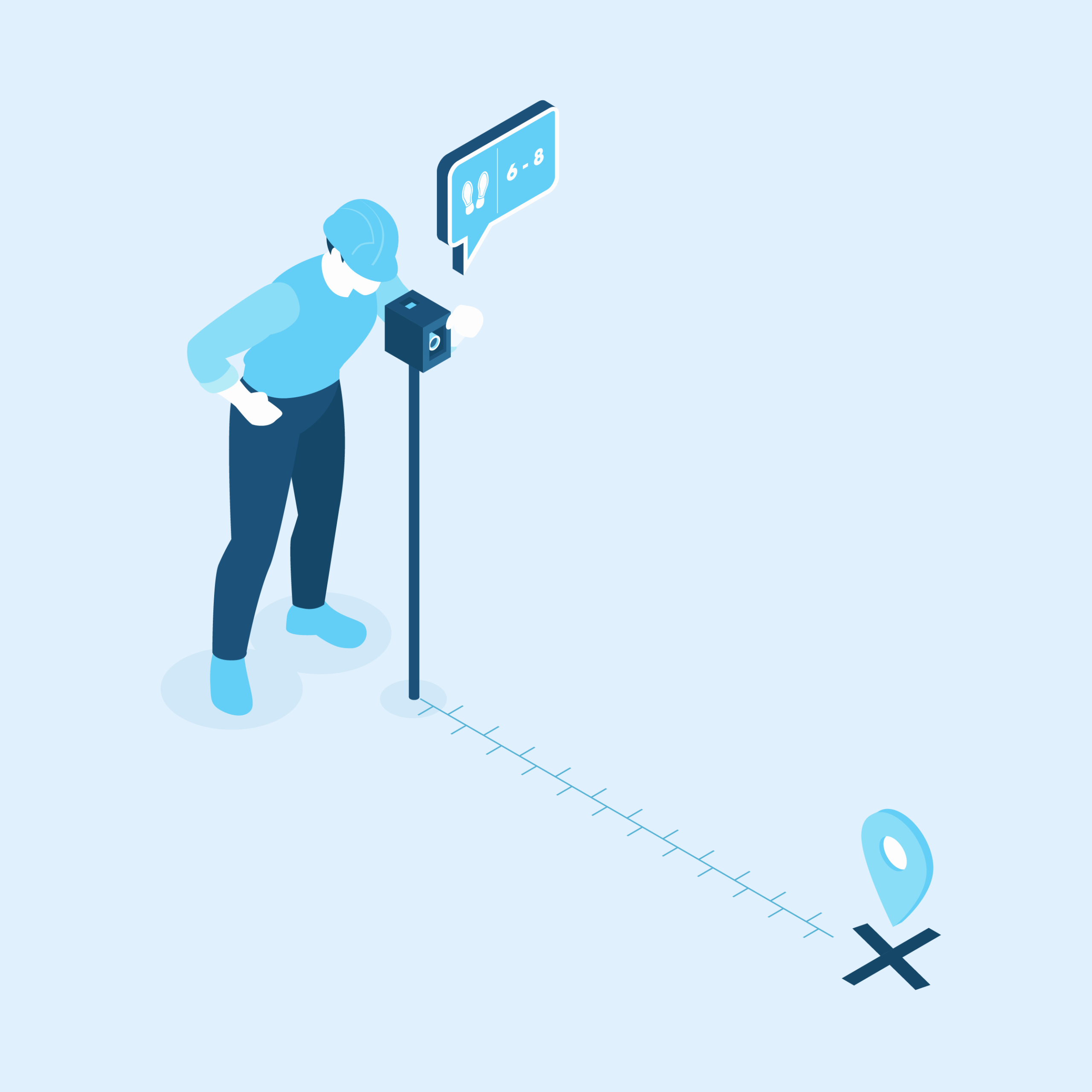
3
Dig Post Holes
The professional team will contact you to schedule a date for digging the fence post holes before they start setting up the fences. Post holes will be dug by a small group of people. So, at this time, all the laborers won’t come to the site for work.
As a general guideline, they should bury the post at least one-third of its height. A six feet high fence, for example, will require at least two feet deep. Moreover, the holes must be 11-12 inches wide, or around three times the post’s width.
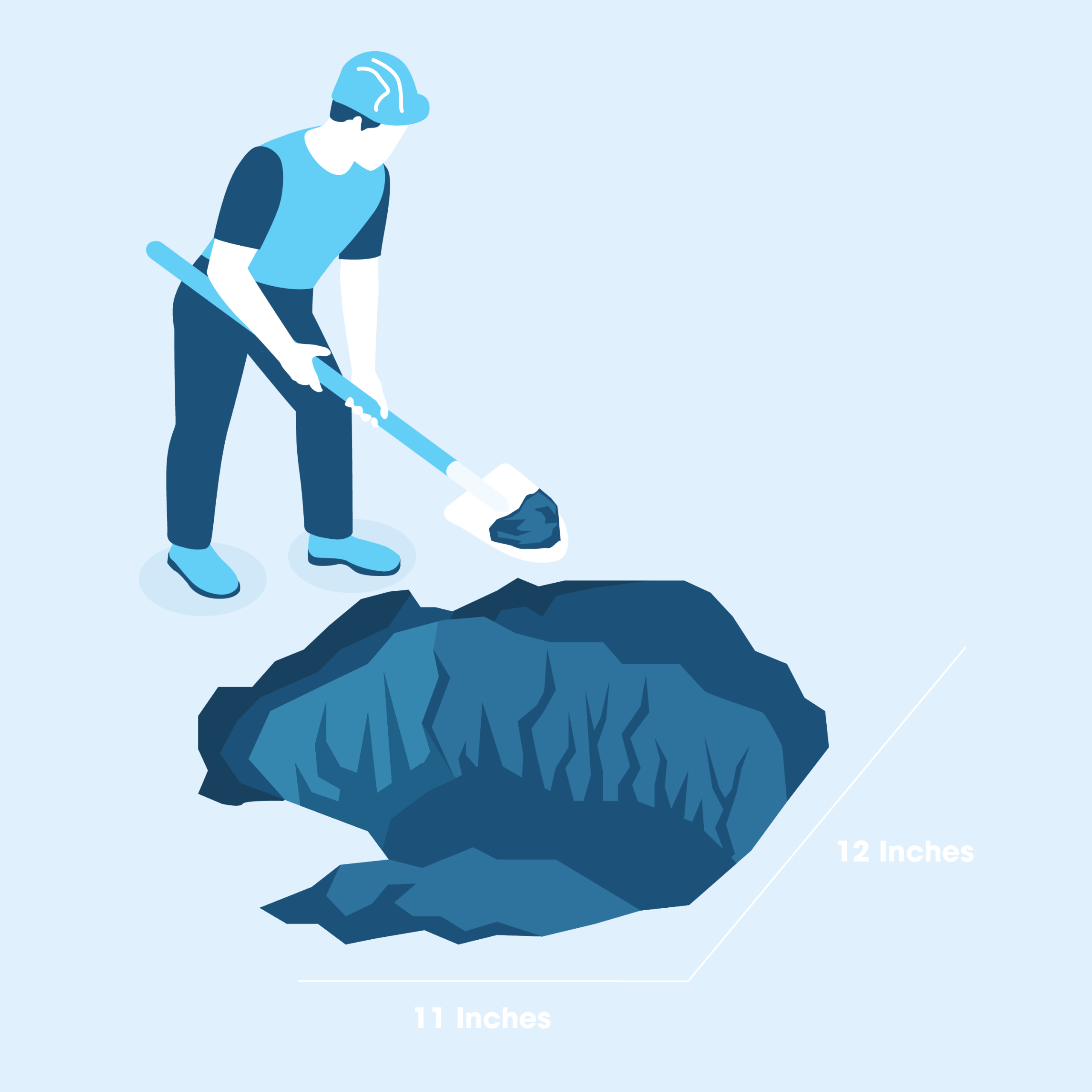
4
Mix Concrete and Set Posts
The company can mix and pour the concrete into the holes while still wet. Alternatively, they can also pour dry concrete into the holes and around the fence posts before adding water. Generally, the concrete hardens within 2 or 3 hours. The company will leave the posts to settle for 24 hours or more according to their schedule.
Well, don’t worry if the fence posts appear to be too high during this point. Fence posts are frequently built tall and then trimmed down to actual size afterward.
The hardened concrete that the post is set in may be referred to as a ‘footing’.

5
Build Fence
At this step, workers will put stringers, gates, and other things that make up your fence after the fence posts are securely in position. However, they won’t use stringers when building a horizontal fence.
To connect the fence posts, they will construct a vertical and horizontal rail. After that, they will make sure the top and bottom rails are exactly aligned by measuring them.
Fence panels, which are pre-built portions of the fence with stringers and fence boards, are an alternative for vertically oriented fences. The fence panels are normally attached to the fence posts with metal brackets.
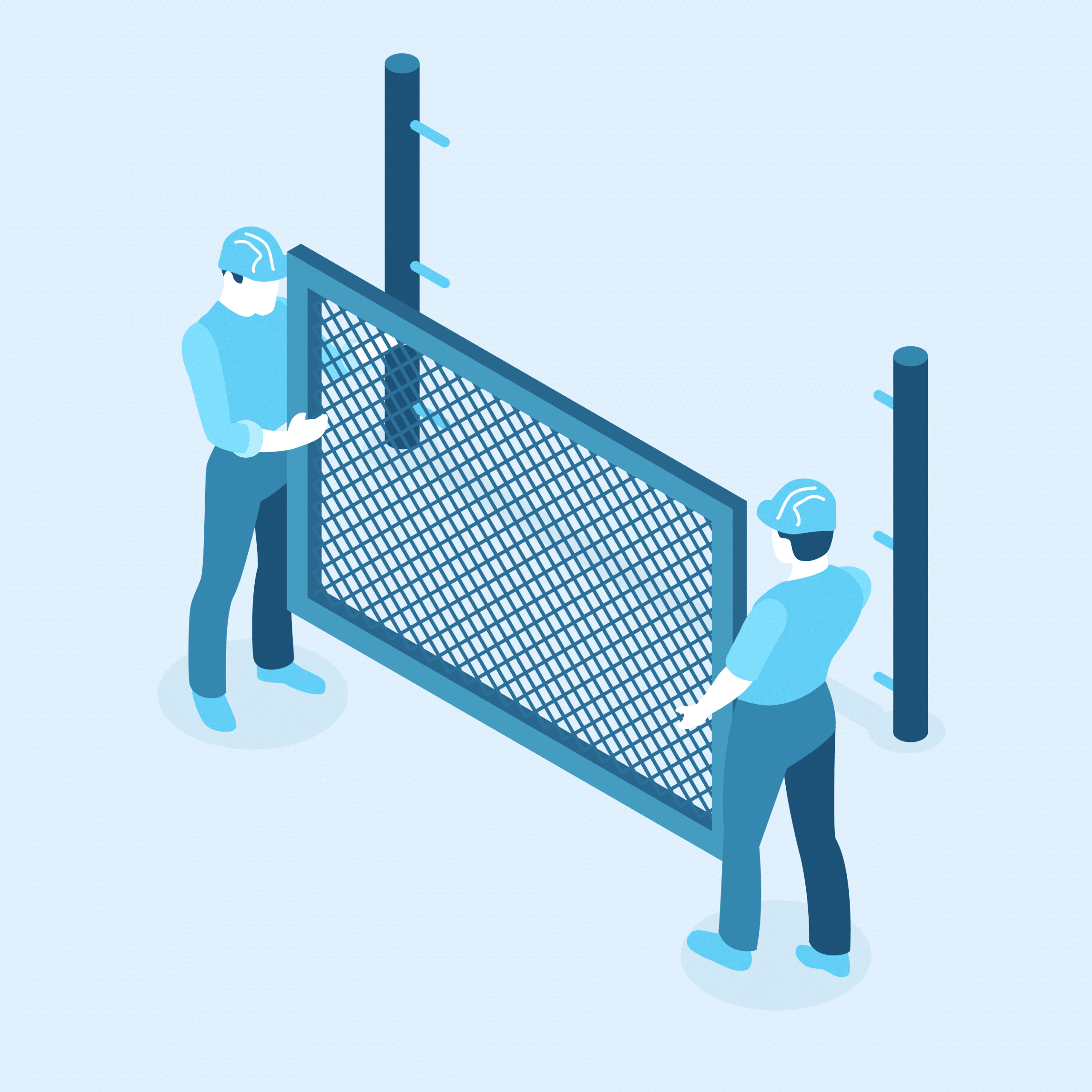
6
Final Touch-up
After completing the installation of the fences, workers will start to clean up all the wastes. Now, you can go and look over the fences to figure out if everything is okay or not. If you are satisfied, they will start working on the final touch-up.
It is optional if you want to stain, paint, or coat the fences. If you choose to do them, the team will come another day and complete your work. However, if you don’t want staining or coating, their work is done already.
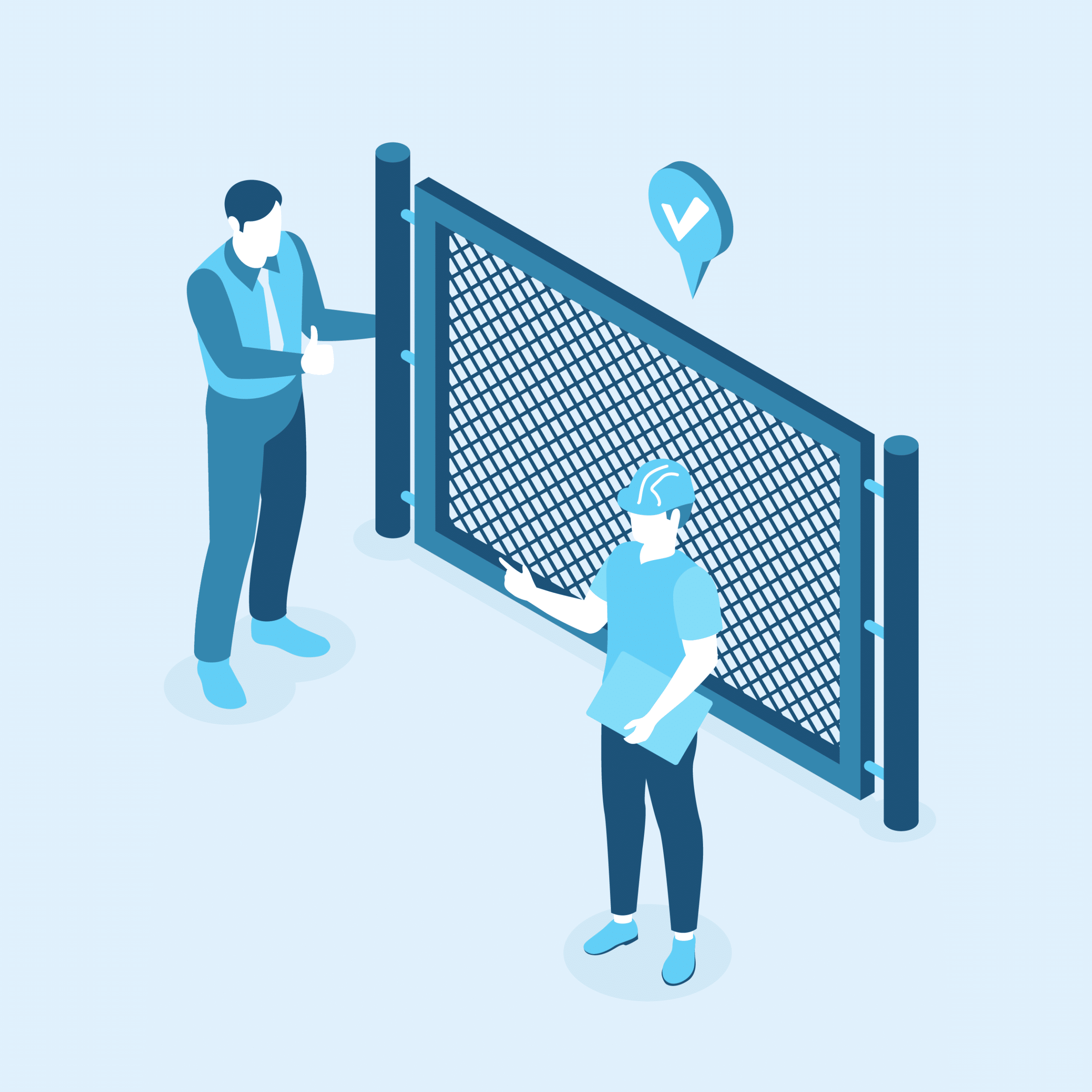
Important Considerations
Before finalizing your deal with the contractor, you have to consider a few things. For example, choosing the fence type, getting permits and approval, learning local building codes, land clearing, etc.
Let’s discuss a few important things to consider before starting the fence installation process:
Choose the Correct Type of Fence
You have to first determine what type of fence you want to install in your backyard. You have to keep in mind both your budget and needs before selecting the type of fence.
As there are so many materials and different designs of fencing, you have to choose the one you need by comparing them with one another. Also, finalize the height, number of gates, and other things you want in your fence.
Get Necessary Permits and Approval
You have to check the local ordinances to see if you need permission. If this is the case, submit your fence plans to the relevant authorities for getting a permit. A permit costs between $200 and $400, depending on your location.
Know the Local Building Codes
Local laws and property owners may have limitations on the height of fences that can be placed in your region, especially if it will block sight lines. To ensure that you don’t get into any legal problems, always check with local agencies before building fencing.
Your fence will be inspected once it is installed to ensure that it complies with all applicable building codes.
Land Clearing and Leveling
Before putting up a fence, you must clear and level the land. Labor expenses can increase by $2 to $3 per linear foot if there are barriers such as existing structures or trees that cannot be relocated. Besides, you have to level the ground if it’s sloppy land, which can add around $4 to $8.
Check Different Fence Installation Companies
Before finalizing the contract with a company, you must check different companies to get the best deal for you. Ask for references from your neighbors and before deciding on whom to hire to install the fence, gather at least 4 - 5 estimates from fencing companies.
Frequently Asked Questions
The hog wire fence is the cheapest form of fence to install. Hog wire fences only cost $1 to $4 per linear foot.
The lifespan of a fence is not the same for all types of fences. It is dependent on the material. A wire fence can last up to 5-10 years, whereas wrought iron fences can last for a lifetime.
As the labor costs are a large part of the fence installation cost, building the fence by yourself will cut the expenses to almost half. So, it is cheap to build fences on your own for sure.
Yes, if you maintain your fence properly it can boost your home value. A wire or a chain link fence won’t add much to the property value. But fences made of high-end materials will significantly enhance the home value.
Whether you need a permit or not depends on the area you live in. In most regions, you would need a permit to install a fence.
If you want to build the fences with high-end materials, it will be pretty expensive. But building a fence with cheap materials is not so expensive if you do it yourself.
Yes, aluminum fences are fairly expensive. But it is a cheaper option if compared to wrought iron, composite, glass, and other high-end fences.
For building fences in high wind areas, you would need to choose a durable fence type that can be resistant to extreme weather. Besides, you have to choose a design that allows the wind to pass freely through your fence and ensure having a solid frame for your fence.
